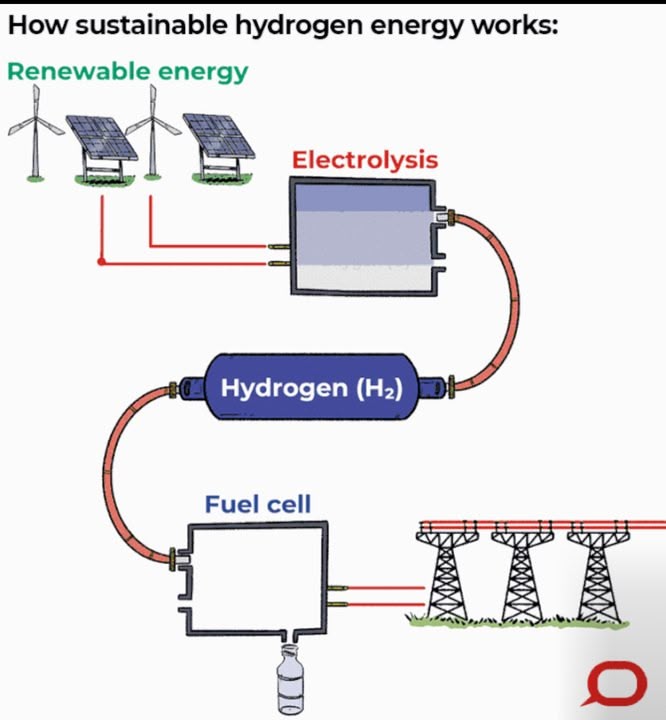This page is a permanent link to the reply below and its nested replies. See all post replies »
ArishMell · 70-79, M
Who builds national-grid systems like that?
Normal solar- and wind- powered systems do not have that intermediate hydrogen section. They use storage batteries but the nationall grid may also be helped, where feasible, by pumped-storage hydro-electric plant; and of course in many countries still by nuclear or non-nuclear, base-load power-stations.
There is no hydrogen-sequence in that chain at all.
The national grid supply may also feed separate electrolysers, as "customers" producing hydrogen. Or we might see solar / wind installations whose primary or only task is powering electrolysers. Either way, that hydrogen is for applications not using electricity from the national system: e.g. earth-moving equipment, railway locomotives for non-electrified routes. Possibly too, producing hydrogen as a future partial or complete replacement for natural-gas in the public gas supply.
Not as shown, adding needless complexity and inefficiency to the primary electricity-supply chain.
Where did you find that that drawing? You don't cite its source. It seems made by someone who has muddled up two entirely separate services; but whether by ignorance or ill-will only they know. Either that or someone really has designed such a system somewhere, but that seems very unlikely.
Normal solar- and wind- powered systems do not have that intermediate hydrogen section. They use storage batteries but the nationall grid may also be helped, where feasible, by pumped-storage hydro-electric plant; and of course in many countries still by nuclear or non-nuclear, base-load power-stations.
There is no hydrogen-sequence in that chain at all.
The national grid supply may also feed separate electrolysers, as "customers" producing hydrogen. Or we might see solar / wind installations whose primary or only task is powering electrolysers. Either way, that hydrogen is for applications not using electricity from the national system: e.g. earth-moving equipment, railway locomotives for non-electrified routes. Possibly too, producing hydrogen as a future partial or complete replacement for natural-gas in the public gas supply.
Not as shown, adding needless complexity and inefficiency to the primary electricity-supply chain.
Where did you find that that drawing? You don't cite its source. It seems made by someone who has muddled up two entirely separate services; but whether by ignorance or ill-will only they know. Either that or someone really has designed such a system somewhere, but that seems very unlikely.



